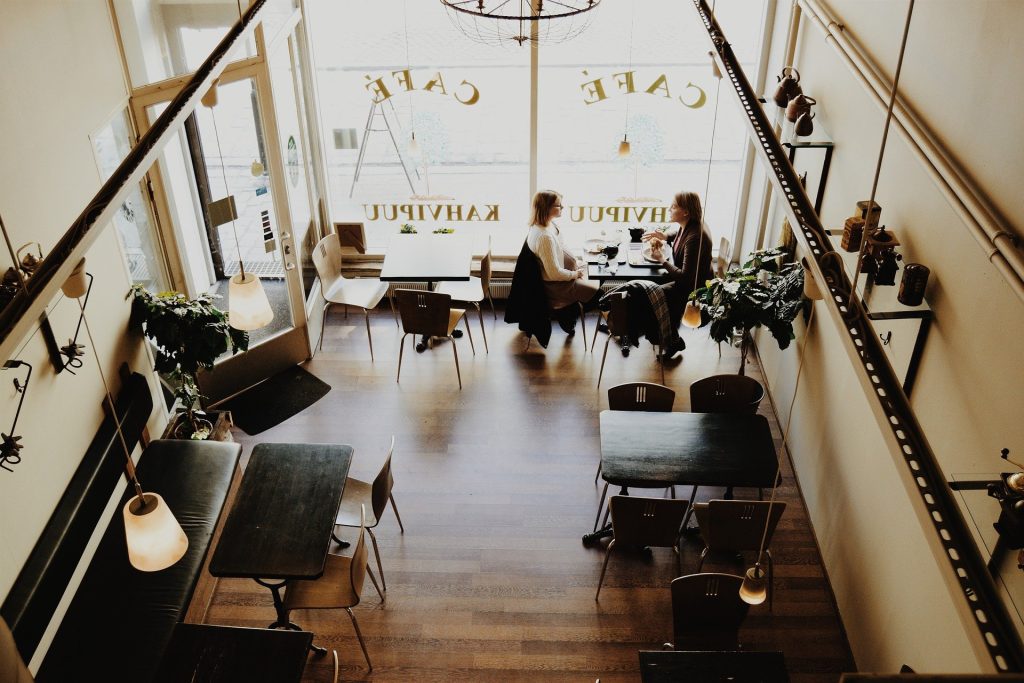Creating the Perfect Ambiance
When it comes to owning a café, choosing the right setting is crucial. The decision to go with an indoor or outdoor space can significantly impact your business.
Let’s discover the pros and cons of operating both outdoor and indoor cafe spaces, exploring various factors such as weather, customer preferences, and costs. Whether you’re a café owner or considering opening one, understanding these aspects is vital to your success.
Embracing the Great Outdoors
Pros of Outdoor Cafe Spaces
Fresh Air and Scenic Views
Outdoor cafes offer an open-air experience, allowing customers to enjoy the fresh breeze and soak in scenic views. This natural ambience can be a major draw for customers seeking a relaxed and refreshing environment.
Increased Seating Capacity
Outdoor seating can significantly boost your cafe’s seating capacity, potentially leading to increased sales during peak hours. It’s a great way to accommodate more patrons without expanding your indoor space.
Attracting Passersby
Outdoor seating can catch the eye of passersby, enticing them to stop and have a cup of coffee or a bite to eat. It can be a powerful marketing tool, especially in high-traffic areas.
Versatility and Seasonal Appeal
While outdoor spaces might be affected by weather, they can offer seasonal appeal. For instance, in summer, customers might prefer outdoor seating to bask in the sun, while indoor spaces are cosier in the winter.
Creating a Unique Brand Identity
An outdoor cafe with a well-designed aesthetic can create a unique and memorable brand identity. It can set you apart from the competition and make your cafe more Instagram-worthy.
Cons of Outdoor Cafe Spaces
Weather Dependency
One of the most significant drawbacks of outdoor spaces is their vulnerability to weather conditions. Rain, extreme heat, or cold can deter customers, leading to unpredictable business patterns.
Maintenance Challenges
Outdoor spaces require more maintenance due to exposure to the elements. Regular cleaning, repairing, and weatherproofing are necessary, incurring additional costs.
Licensing and Regulation
Operating an outdoor cafe often involves dealing with complex licensing and regulatory issues. Compliance with local regulations and obtaining necessary permits can be time-consuming and costly.
Noise and Distractions
Outdoor seating can be noisier due to traffic, pedestrians, and other environmental factors. This can be a distraction for some customers looking for a quieter, indoor experience.
Limited Seating During Extreme Weather
In extreme weather conditions, outdoor seating may become impractical. This could lead to a loss of revenue during those periods.
The Indoor Comfort Zone
Pros of Indoor Cafe Spaces
Consistent Environment
Indoor cafes offer a controlled and consistent environment. Customers can enjoy their meals and drinks without worrying about weather conditions or environmental disruptions.
Extended Operating Hours
Indoor spaces allow for extended operating hours, making it feasible to serve customers during the evenings and late nights, thus maximising potential revenue.
Year-round Business
Unlike outdoor spaces, indoor cafes are not limited by seasonal changes. You can maintain a steady flow of customers throughout the year.
Customisation and Comfort
Indoor spaces provide more opportunities for interior design and comfort. You can create a unique and cosy atmosphere that keeps customers coming back.
Reduced Noise and Distractions
Indoor cafes are generally quieter and less distracting, making them appealing to customers who prefer a tranquil setting.
Cons of Indoor Cafe Spaces
Limited Seating Capacity
Indoor spaces usually have a limited seating capacity. This can be a challenge during peak hours when customers may have to wait for a table.
Higher Initial Costs
Setting up and decorating an indoor space can be costly, especially if you aim for a high-end or unique interior design. This upfront investment can be a barrier for new cafe owners.
Ventilation and Climate Control Costs
Maintaining a comfortable indoor environment often requires investments in ventilation and climate control systems, which can increase operational costs.
Less Visibility to Passersby
Indoor cafes may have less visibility compared to outdoor ones. Potential customers might not notice your cafe as easily, which could affect foot traffic.
Catering to Diverse Preferences
Some customers prefer the outdoor experience, so an indoor-only café might miss out on this demographic.
Choosing the Right Cafe Space
Deciding between outdoor and indoor cafe spaces depends on your specific goals, location, and target audience. While outdoor spaces offer a unique ambience and the potential for increased capacity, they are weather-dependent and come with regulatory challenges. Indoor spaces provide a consistent environment, year-round business, and customisation options, but can be costly to set up and maintain.
Whichever you choose, creating a compelling and comfortable space for your patrons is paramount to success.
Remember, a cafe must offer not just a menu of great coffee and delectable treats but also an inviting atmosphere. Whether you opt for the great outdoors or the cosy indoors, your cafe’s fitout is a crucial element in creating the perfect ambience.
Hand Picked Articles

